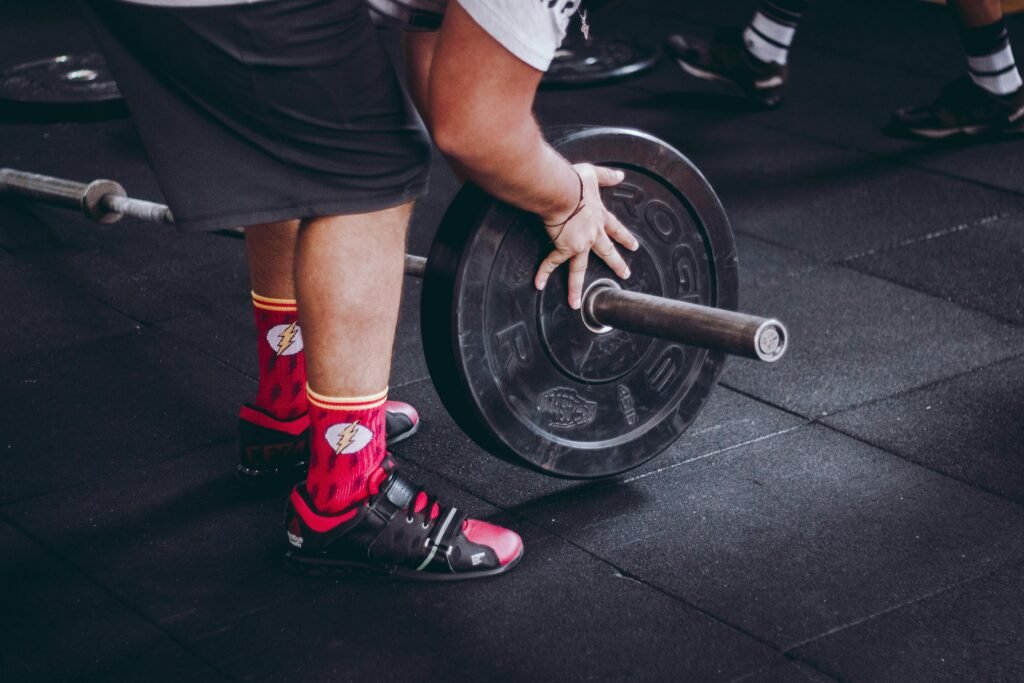
Are Deadlifts Still Worth It?
Understanding the Deadlift: Anatomy and Mechanics
The deadlift is a compound exercise that primarily targets several key muscle groups in the body, integrating both strength and stability to deliver profound benefits. The major muscles engaged during a deadlift include the hamstrings, gluteus maximus, lower back (erector spinae), and the core muscles. These muscle groups work in concert to lift the weight off the ground, making the deadlift a highly effective full-body exercise.
When executing a deadlift, it is essential to adopt the correct form to maximize the effectiveness of the movement while minimizing the risk of injury. The initial setup begins with standing hip-width apart with the barbell positioned over the mid-foot. Grip the bar just outside the knees while bending at the hips and knees, ensuring a flat back and engaged core. As the lift commences, initiate the movement by pushing through the heels while maintaining a neutral spine. It is crucial to keep the barbell close to the body as it travels upward to preserve leverage and prevent unnecessary stress on the lower back.
Several common mistakes can compromise both the efficacy and safety of the deadlift. A common error is rounding the back during the lift, which can lead to significant injury if not corrected. Instead, focusing on a neutral spine throughout the movement is imperative. Additionally, lifters often fail to engage their core properly, leading to instability. Practicing proper technique with lighter weights before progressing to heavier loads can help reinforce good habits and ensure safety.
In essence, understanding the anatomical and mechanical aspects of deadlifting facilitates not just better performance but also a greater appreciation for how this fundamental movement can contribute to overall strength and fitness goals.
Benefits of Deadlifts: Strength, Functionality, and More
Deadlifts are often considered one of the most effective exercises for building strength and muscle mass, offering a wide array of benefits that extend beyond the gym. One of the primary advantages of incorporating deadlifts into your workout routine is the significant increase in overall strength. The movement engages multiple muscle groups, including the hamstrings, glutes, lower back, and core. By promoting the recruitment of these large muscle groups, deadlifts stimulate muscle growth and improve overall strength, making them a vital component of any strength-training program.
Additionally, deadlifts enhance athletic performance by mimicking the functional movements used in various sports. The explosive power generated during a deadlift transfer to improved speed, agility, and balance, benefits that can positively impact other athletic endeavors. Athletes who regularly perform deadlifts often report increased power output, which translates to better performance on the field or court.
Moreover, deadlifts improve functional fitness, making daily activities easier and more manageable. By strengthening the posterior chain muscles, which are integral for core stability and posture, deadlifts can help individuals perform essential tasks such as lifting heavy objects or even standing for extended periods with reduced risk of injury. This functional aspect of deadlifts is particularly beneficial for older adults, as it may contribute to greater independence and quality of life.

In addition to physical benefits, deadlifts have been linked to enhanced bone health and improved metabolic function. Research indicates that weight-bearing exercises like deadlifts stimulate bone density, reducing the risk of osteoporosis as one ages. Furthermore, the metabolic demand created during this compound movement can elevate calorie expenditure, aiding in weight management and overall fitness. Thus, the incorporation of deadlifts not only fosters strength but also supports broader health and wellness objectives.
How To Incorporate Deadlifts Into Your Routine: Variations and Programming
Integrating deadlifts into your fitness routine can significantly enhance strength, stability, and overall athletic performance. To begin with, understanding the various deadlift variations is essential, as each targets different muscle groups and caters to distinct fitness goals. The conventional deadlift is the most recognized, engaging the posterior chain, which includes muscles of the back, glutes, and hamstrings. For those focusing on hip mobility, the sumo deadlift may be more suitable, as it features a wider stance that alters the lifting mechanics. This variation reduces strain on the lower back and is often favored by individuals with flexibility limitations.
The Romanian deadlift serves as another effective option, emphasizing the hamstrings and glutes while placing less stress on the lower back. This variation allows for greater control and can be particularly useful for those looking to develop strength through a limited range of motion without compromising form. Additionally, the trap bar deadlift, which employs a specialized hexagonal bar, offers a more ergonomic lift. This variation allows lifters to maintain a more neutral spine position and may be more beginner-friendly, making it an excellent choice for novices or those recovering from injuries.
When programming deadlifts into your routine, consider elements such as sets, repetitions, and frequency. For strength development, performing three to five sets of three to six repetitions is typically recommended, allowing for heavier weights and ample recovery time. On the other hand, if hypertrophy is the goal, higher repetitions—around eight to twelve per set—can be utilized. Additionally, deadlifts can be incorporated into your training schedule two to three times per week, ensuring sufficient recovery between sessions while maintaining workout variety. Tailoring your deadlift routine according to personal fitness objectives will help maximize benefits and alignment with overall goals.
Common Myths and Misconceptions About Deadlifts
Deadlifts are often surrounded by various myths and misconceptions that can deter individuals from integrating this powerful exercise into their fitness routine. One prevalent myth is the fear of injury associated with deadlifting. Many believe that lifting heavy weights will lead to back injuries or other health issues. However, when performed with proper form and technique, deadlifts can enhance core stability and strength, reducing the risk of injury during other activities. It is essential to start with lighter weights and gradually progress, ensuring that the mechanics are sound before placing significant loads on the bar.
Another common misconception is that deadlifts are only suited for advanced lifters. In reality, deadlifts can be tailored to all fitness levels. Beginners can benefit from the movement by using lighter weights or performing variations like the kettlebell or sumo deadlift, which can be less intimidating. Incorporating deadlifts into a routine can significantly enhance overall strength and fitness, making them suitable for everyone, regardless of experience level.
Gender-related myths are also prevalent in discussions about strength training and deadlifting. Some individuals may believe that these exercises are unnecessary or inappropriate for women, stemming from outdated notions about femininity and strength. In fact, women can gain substantial benefits from deadlifting, as it promotes muscle development, improves fitness levels, and enhances overall functional strength. Strength training, including deadlifts, is not exclusive to any gender and can contribute to healthier lifestyles for everyone.
By addressing these myths and misconceptions surrounding deadlifts, individuals can gain a clearer understanding of how this exercise benefits strength training. Including deadlifts in workout routines can provide substantial advantages, dispelling fears and opening avenues for safe, effective training practices.
If you found this post to be helpful, then you may be interested in the rest of our blog page here.
At Gear Affiliate, we always want to give our readers more resources to research. Below are a few sources that we have found to be helpful relating to this topic.


